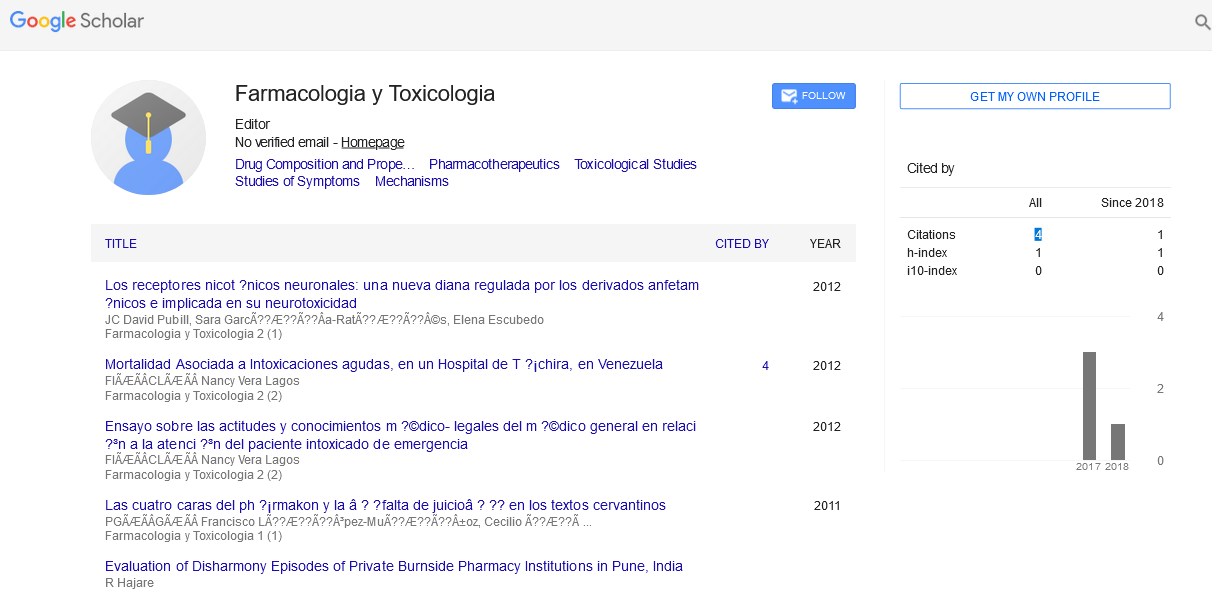Perspective - (2024) Volume 14, Issue 6
Teratogenicity: Understanding the Impact of Teratogens on Fetal Development
Naguib Mechawar*
Department of Teratology, University of Catholics, Turin, Italy
*Correspondence:
Naguib Mechawar, Department of Teratology, University of Catholics, Turin,
Italy,
Email:
Received: 07-Aug-2024, Manuscript No. IPFT-24-15136;
Editor assigned: 12-Aug-2024, Pre QC No. IPFT-24-15136 (PQ);
Reviewed: 26-Aug-2024, QC No. IPFT-24-15136;
Revised: 02-Dec-2024, Manuscript No. IPFT-24-15136 (R);
Published:
30-Dec-2024
Introduction
Teratogenicity refers to the capacity of certain substances,
known as teratogens, to cause congenital abnormalities or
increase the incidence of developmental defects in a developing
fetus. These defects can range from minor physical
malformations to severe cognitive impairments and even fetal
death. The study of teratogenicity is crucial in the fields of
medicine, pharmacology and toxicology to prevent birth defects
and ensure safe maternal health practices.
Description
Historical perspective
The recognition of teratogenicity dates back to the early 20th century, but it gained significant attention after the thalidomide
tragedy in the late 1950s and early 1960s. Thalidomide, a drug
prescribed for morning sickness in pregnant women, led to
thousands of babies being born with phocomelia, a condition
characterized by severely shortened limbs. This incident
underscored the critical need for stringent drug testing and
regulatory measures to prevent similar occurrences in the
future.
Mechanisms of teratogenicity
Teratogens can affect fetal development through various
mechanisms, including.
Genetic damage: Some teratogens can induce mutations in
the DNA of the developing fetus, leading to congenital
anomalies. These genetic mutations can result in structural
malformations or functional deficits.
Interference with cell division: Many teratogens disrupt
normal cell division and differentiation processes, leading to
abnormal tissue formation. This disruption can cause a wide
range of defects depending on the timing and extent of
exposure.
Vascular disruption: Certain teratogens can impair blood flow
to the fetus, causing hypoxia and subsequent developmental
issues. For instance, some medications and chemicals can
constrict blood vessels, leading to insufficient oxygen and
nutrient supply to the developing organs.
Endocrine disruption: Some teratogens interfere with
hormonal signals essential for normal fetal development.
Hormones play a crucial role in the growth and differentiation of
tissues and any disruption can result in developmental
anomalies.
Types of teratogens
Teratogens encompass a broad spectrum of substances,
including:
Pharmaceuticals: Besides thalidomide, several other drugs
have been identified as teratogens. For example, isotretinoin
(Accutane), used to treat severe acne, can cause severe birth
defects if taken during pregnancy. Similarly, certain antiepileptic
drugs like valproate are known teratogens.
Environmental chemicals: Exposure to certain environmental
chemicals, such as pesticides, heavy metals (like lead and
mercury) and industrial pollutants, can lead to congenital
defects. These substances can be particularly harmful if
exposure occurs during critical periods of fetal development.
Infections: Certain infections during pregnancy, such as
rubella, cytomegalovirus and Zika virus, are known teratogens.
These infections can cross the placental barrier and affect the
developing fetus, leading to a range of abnormalities including
microcephaly and congenital heart defects.
Alcohol and recreational drugs: Alcohol is a well-known
teratogen responsible for Fetal Alcohol Spectrum Disorders
(FASD), which encompass a range of physical, behavioral and
cognitive abnormalities. Similarly, recreational drugs like cocaine
and methamphetamine can cause severe developmental issues.
Radiation: Exposure to ionizing radiation during pregnancy,
whether from medical procedures or environmental sources,
can lead to congenital anomalies. The extent of damage
depends on the dose and timing of exposure.
Factors influencing teratogenic effects
Several factors determine the extent and severity of
teratogenic effects, including:
Dose and duration: The dose of the teratogen and the
duration of exposure are critical determinants of its impact.
Higher doses and prolonged exposure generally result in more
severe defects.
Timing of exposure: The stage of pregnancy during which
exposure occurs plays a crucial role. The first trimester is
particularly vulnerable as organogenesis, the formation of
organs, occurs during this period. Exposure during this time can
lead to major structural abnormalities.
Genetic susceptibility: The genetic makeup of both the
mother and the fetus can influence susceptibility to teratogenic
effects. Certain genetic variants may either increase or decrease
the risk of defects upon exposure to specific teratogens.
Maternal health: The overall health and nutritional status of
the mother can affect the impact of teratogens. Conditions such
as diabetes and hypertension can exacerbate the effects of
teratogenic substances.
Prevention and management
Preventing teratogenicity involves a multifaceted approach:
Public awareness: Educating women of childbearing age
about the risks of teratogens and the importance of avoiding
harmful substances during pregnancy is crucial. Public health
campaigns and counseling can play a significant role in
prevention.
Regulation and screening: Strict regulatory measures should
be in place to ensure that drugs and chemicals are thoroughly tested for teratogenic potential before being approved for use.
Pregnant women should be routinely screened for potential
exposures to teratogens.
Preconception care: Providing preconception care, including
genetic counseling and risk assessment, can help identify and
mitigate potential risks before pregnancy.
Prenatal care: Regular prenatal care is essential for
monitoring fetal development and identifying any early signs of
teratogenic effects. Early intervention can sometimes mitigate
the impact of certain teratogens.
Conclusion
Teratogenicity remains a critical area of concern in maternal
and fetal health. Understanding the mechanisms, types and
factors influencing teratogenic effects is essential for preventing
congenital anomalies and ensuring healthy pregnancies.
Through public awareness, regulatory measures and
comprehensive healthcare strategies, the risks associated with
teratogens can be minimized, paving the way for healthier future
generations.
Citation: Mechawar N (2024) Teratogenicity: Understanding the Impact of Teratogens on Fetal Development. Farmacologia Toxicologia, Vol.14 No.6:
051





